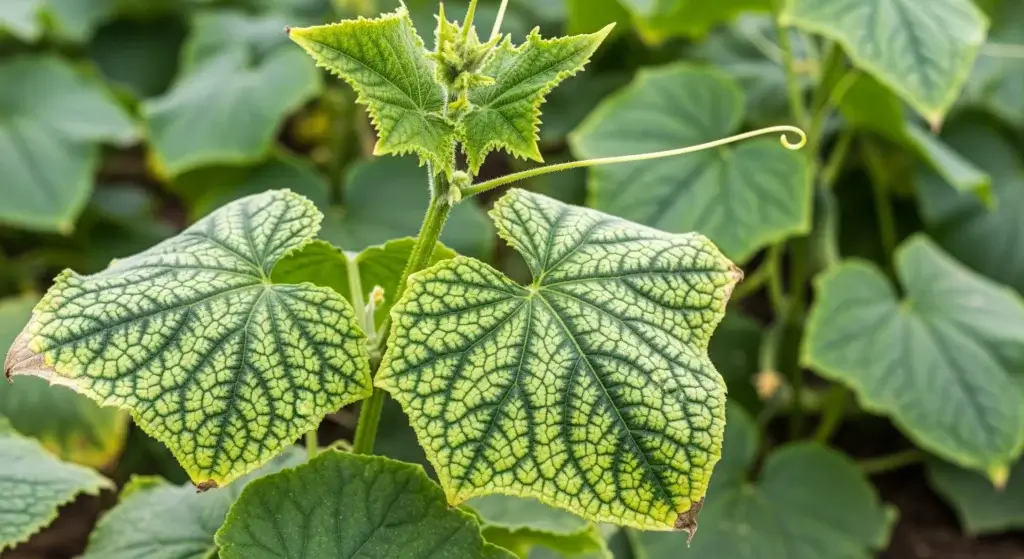
Beetroot rust is a fungal disease that messes with your beet plants—think ugly leaf spots, stunted growth, and lower yields.
It’s a common headache for both backyard gardeners and pro growers.
In this guide, we’ll show you how to spot beet rust early, treat it with both organic and chemical options, and keep it from coming back.
Whether you grow beets for fun or for profit, knowing how to handle rust is key to getting a strong, healthy harvest.
What is Beetroot Rust Disease? The Fungal Culprit
Beetroot rust is a fungal disease caused by Uromyces betae—a parasite that only lives on living plant tissue.
It doesn’t just go after beets; it also hits Swiss chard, spinach, and sugar beet.
If it’s part of the Chenopodiaceae family, it’s fair game.
This fungus loves three things:
- Mild temps – It thrives in moderate weather (not too hot, not too cold).
- Wet leaves – Rain, dew, or heavy watering? That moisture on leaves gives spores the green light to grow.
- Crowded plants – Tight spaces with poor airflow trap humidity, which speeds up infection.
Uromyces betae has a complex life cycle with multiple spore stages.

Identifying Beetroot Rust Disease Symptoms: What to Look For
Catching beetroot rust early makes a big difference.
The fungus mainly shows up on leaves, but if you let it spread, it can mess with the whole plant. Here’s what to look for:
1. Rusty Pustules (Underside of Leaves)
You’ll see tiny, raised bumps on the bottom of the leaves.
They’re rust-colored—think orange-brown or reddish—and packed with spores.
2. Discolored spots (Top Side of Leaves)
Right above the pustules, the top of the leaf usually shows small yellow, brown, or purplish spots.
They match up with what’s happening underneath.
3. Powdery spores
When those bumps break open, they release a fine, rust-colored powder.
Rub it with your finger and it’ll leave an orange smudge. Yep, it’s that dusty.
4. Bigger, merged patches
As the infection gets worse, those tiny pustules can merge into large, weird-shaped patches of rust-colored mess.
5. Yellow leaves that drop off
Older leaves will start turning yellow, then brown, and eventually fall off.
If enough leaves go, the plant weakens fast.
6. Stunted growth (if it gets bad)
Rust doesn’t touch the beet itself, but if the plant loses too many leaves, it can’t photosynthesize well.
That means smaller roots and a weaker harvest.
Don’t confuse it with other problems
Rust pustules are dry and powdery—not slimy or wet like bacterial spots.
And they’re raised, unlike most nutrient deficiency spots.
If it looks like someone sprinkled rusty cinnamon on the bottom of your beet leaves, it’s probably rust.
Spot it early, act fast, and your beets can still bounce back.

Effective Beetroot Rust Treatment Options
So your beets have rust. Don’t panic—there’s plenty you can do, especially if you catch it early.
Whether you’re a backyard grower or managing a small farm, here are simple, effective organic moves to stop rust in its tracks.
1. Cultural and organic treatment
These methods focus on environmental control and natural solutions, ideal for home gardeners and those seeking sustainable practices.
Remove infected leaves immediately
Cut off any leaves with rust spots. Don’t toss them in the compost—trash them. You don’t want spores sticking around.
Use clean shears and wipe them down between cuts so you’re not spreading the fungus by accident.
Improve air circulation
Fungi love damp, still air. Help your plants breathe better:
- Thin your rows – If your beets are packed in like sardines, give them space.
- Prune crowded or low-hanging leaves – Leaves close to the soil stay wetter longer. Get rid of them.
Change how you water
Water habits can make or break rust control.
- Water in the morning – So leaves dry off by night.
- Use drip irrigation or soaker hoses – Skip the overhead sprinkler; wet leaves = fungal party.
- If using a watering can, aim for the base – Keep those leaves as dry as possible.
Keep things clean
Good garden hygiene goes a long way.
- Clear plant debris – After harvest, remove all beet leaves and roots. Rust spores can chill in old plant bits and come back stronger next season.
- Rotate crops – Don’t plant beets or their cousins (spinach, Swiss chard) in the same spot for 2–3 years. Give the fungus fewer chances to strike again.
Organic fungicides
These won’t nuke an outbreak but can help early on or keep it from starting:
- Neem oil – Natural and safe. It messes with the fungus’s life cycle. Spray in the morning or evening and coat both sides of the leaves.
- Sulfur sprays – Old-school but effective. Stops spores from germinating. Just don’t use it when it’s hot out—it can burn your plants.
- Potassium Bicarbonate (like GreenCure) – Changes the leaf surface pH to make it harder for fungi to grow. Think of it as baking soda’s buff cousin.
2. Chemical treatment (for severe cases)
Sometimes, beet rust gets out of control—especially in big gardens or farms where every harvest counts.
If organic tricks aren’t cutting it, chemical fungicides can help. But you’ve got to use them the right way.
What to use: Look for these ingredients
Grab a fungicide made for edible crops and check that it targets rust. Some common active ingredients to look for:
- Chlorothalonil – A broad-spectrum fungicide that hits a lot of fungal diseases, including rust. Just make sure it’s allowed for beets in your area.
- Myclobutanil – A systemic fungicide that gets inside the plant. Great for stopping rust from spreading.
- Azoxystrobin (Strobilurins) – These are strong, flexible, and used a lot in commercial farming. They work both as a protectant and to slow down active infections.
Key rules for using chemical fungicides
- Read the label: Follow the directions for mixing, how much to spray, what safety gear to wear, and how long to wait before you harvest.
- Rotate your fungicides: Fungi can build resistance if you keep using the same stuff. Switch between products with different active ingredients to keep rust guessing.
- Spray the whole leaf: Rust hangs out under the leaf, so make sure you coat both sides. Don’t just do a drive-by spritz.
- Time it right: Fungicides work best early. If leaves are already covered in pustules, you can’t reverse the damage, but you can stop it from spreading to healthy parts.
Quick reminder
Chemical fungicides are serious tools, not quick fixes.
Use them responsibly, especially if you’re growing food. And always wear your safety gear—you’re a grower, not a Marvel villain.
Use early, spray smart, rotate ingredients, and follow the label. That’s how you fight rust like a pro.

Proactive Beetroot Rust Prevention Strategies
Rust is easier to prevent than to fix. If you want clean, healthy beet leaves and solid roots, build good habits into your growing routine.
Here’s how to stop rust before it starts.
1. Pick rust-resistant varieties
Start smart. Some beet varieties handle rust better than others.
They’re not 100% immune, but they hold up longer.
Check seed packets or ask your local extension office which ones do best in your area.
2. Don’t crowd your plants
Beets need breathing room. Stick to the spacing guide on the seed packet.
More space = more airflow = faster-drying leaves = less rust.
3. Water the right way
Water early in the day so leaves dry before night. Aim for the soil, not the leaves.
Skip the sprinkler—use a watering can or drip hose instead. Wet leaves overnight are basically a spa for fungi.
4. Keep things clean
- Pull weeds – They block airflow and might carry spores.
- Remove dead leaves – Don’t leave plant junk lying around.
- End-of-season cleanup – Yank out all beet plants, roots, and leaves. And don’t toss sick stuff in the compost unless your compost gets hot enough to kill off pathogens.
5. Rotate your crops
Move your beets around. Don’t plant them (or chard or spinach) in the same spot every year.
Give that soil a 2–3 year break from anything rust loves. Fungal spores can chill in soil waiting for a rematch.
6. Keep your plants happy
Healthy beets = stronger defense. Give them full sun, balanced nutrients, and regular water.
Don’t over-fertilize or let the soil dry out too much. Avoid stressing them out like a deadline at finals week.
7. Check daily
Flip over those leaves. Rust starts underneath and spreads fast.
Catch it early and you’ve got a shot at stopping it with simple fixes.

Final Thoughts: Beat the Rust, Grow Better Beets
Beetroot rust (Uromyces betae) is annoying but beatable.
If you know what to look for and act fast, you can stop it from wrecking your crop.
Use smart watering, keep plants spaced out, cut infected leaves, and rotate your crops.
For bad outbreaks or big farms, chemical sprays can help too—just use them right.
Stay sharp, keep your garden clean, and don’t give rust a chance. Do that, and you’ll be pulling up healthy, rust-free beets season after season.



